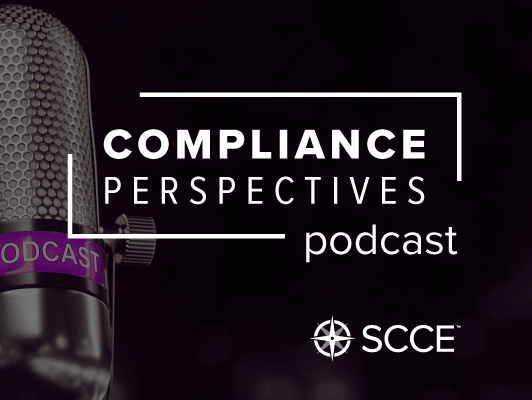Podcast: Play in new window | Download (Duration: 11:39 — 10.7MB)
Subscribe: Apple Podcasts | Email | TuneIn | RSS
Social media keeps evolving: From MySpace to Facebook to Twitter to SnapChat to TikTok to whatever comes next. One thing stays the same, though: there are lots of compliance risk.
In this podcast Kortney Nordrum, Regulatory Counsel and Chief Compliance Officer at Deluxe and author of the chapter “Social Media Compliance” in The Complete Compliance and Ethics Manual shares both the state of the regulatory landscape and practical advice on how to best manage the challenge.
When it comes to regulators, several have weighed in, she reports.
- The National Labor Relations Board (NLRB) has wavered back and forth on various issues but has consistently emphasized that employees may use social media, and employers cannot limit their activities so long as those activities do not have negative impacts on the reputation or credibility of the business. There are, however, a great number of nuances, including that griping about an employer is generally protected.
- The Securities & Exchange Commission (SEC) is focused on ensuring that anyone who invests has access to company information at the same time. As we have all seen with Elon Musk’s ongoing battles with the SEC, they tend to frown on certain statements made on Twitter.
- The Equal Employment Opportunity Commission (EEOC) has been consistent in its approach, warning that companies that do social media searches of their employees need to recognize that this may reveal an employee is a member of a protected class, and that information may not be used in a way that adversely affects the employee.
For compliance teams it’s important to lay out social media policies using rules that are easy to understand. The rules need to be reasonable, simple and use plain language. An example may be, “Do not share confidential information,” with an explanation of what confidential information is.
When working with the team that controls the organization’s social media account, have a separate policy for them since different issues likely apply. Provide them with training and be prepared to serve as an ongoing resource eager to engage in conversation about what is good and bad practice.
In short, social media and the related risks are here to stay. In fact, you’re reading this on a form of social media. So, it’s best to listen in and learn how to manage the risk.


